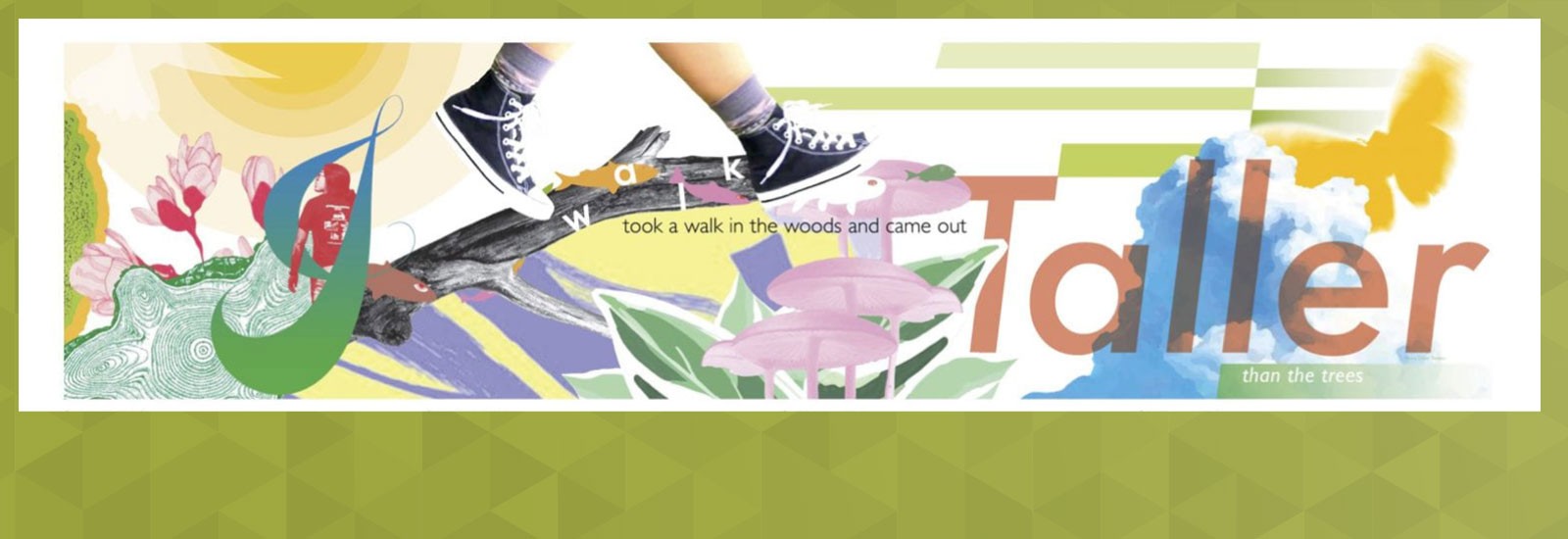Cindy Gail Kao looked to art this year as a form of therapy and to reflect on how precious and sacred nature is.
One of her projects, “The Wisdom of Trees,” won first place in the visual arts category of the Midwest Climate Summit Climate Stories competition.
Kao is one of five Ohio State students who took honors in the competition, for which university students submitted their artistic interpretations of what climate change means to them. Students from 15 universities competed in four categories: visual arts, film/photography, written word and performing arts. The Midwest Climate Summit, with support from Bloomberg Philanthropies, is a group of more than 20 leading Midwestern higher education institutions, non-profits, local governments and businesses partnering to develop a coordinated response to the climate crisis. Ohio State was a founding member school of the summit.
A junior majoring in visual communications design and Chinese with a minor in French, Kao used an accordion fold structure to tell her climate story through a flowing, rhythmic theme of text, photographs and graphic imagery.
“This project is an ode to the way that nature was able to be my escape, my strength and my safety,” she says in her artist statement. “I remember learning from nature and the trees that surrounded me and wanted to show how nature was a respite from the chaos of the world — how being in nature teaches us so much about ourselves. This project is a celebration of life and a reminder to care for the living world around us.”
The other Buckeye Climate Stories winners:
Film/Photography: Christine Stankiewicz, second place
Graduating this spring with a degree in visual communication design, Stankiewicz told her climate story via a motion graphic video about plastic pollution.
“After learning about the plastic pollution in our oceans, I knew I had to use my design skills to raise awareness of this crisis,” she says. Her video describes single-use plastics and their effects on people and the environment. It explains how these plastics enter the environment and describes the amount of plastic we use daily and the impact of microplastics. Ending with a call to action, her video shares simple ways viewers can be part of the solution.
Performing Arts: Kara Komarnitsky, third place
A choreographed dance piece tells Komarnitsky’s climate story.
“It is titled ‘Our Oceans’ and explores the impact of ocean acidification on coral reef ecosystems. It seeks to humanize the environmental damage and inspire the audience to act before it is too late,” she explains.
A junior majoring in dance with minors in environmental science and business, she has performed works by faculty, graduate and undergraduate students as well as choreographed her own works. She is president of the Ohio State University Sierra Club Student Coalition and is currently researching how art can serve as environmental advocacy.
Visual Arts:
Learning about the plants around her as a way of staying grounded, Kline, an ecology student, hopes to pursue a career in restoration ecology. She developed a dye practice as another way of knowing the plants.
“The ecosystems around us are the ones that are tangible, and yet our idea of what constitutes nature worth saving often comes from images of places we’ve never met,” she says. “How can we design solutions to our environmental problems when our attention is somewhere outside of our bodies?”
Her quilt, “Dreaming in Place and Dreaming of Place,” represents her climate story through the use of materials including National Geographic magazines from her childhood and muslin dyed with materials foraged along the Olentangy River, including red and white oak gall, red oak acorn and black walnut, and scrap metal (iron).
Olivia Malloy, honorable mention
Malloy created her illustrated storybook, “thank you, thank you, thank you,” in an accordion format using pen, marker and watercolor for the illustrations, with details created from plastic. She is a sophomore majoring in studio art.
“I see a lot of these environmental changes happening near where I grew up on the coast of Massachusetts,” she says. “In the summer, I work on the docks of a boatyard in a harbor. I see the pollution happening in our oceans firsthand. While I was creating this piece, I saved up wrappers and bags that I was using. I have always thought that the ‘thank you’ phrase written on plastic bags is quite ironic when a bag like this is tangled in a tree or floating in the ocean.”
Read about the contest and all the winners.
The Midwest Climate Summit, held in fall 2020 and spring 2021, launched the Midwest Climate Collaborative, a collective movement to accelerate climate action in the Midwest by creating evidence, catalyzing action, informing public knowledge and public policy, and developing the future leaders needed to sustain and expand work to drive measurable, regional action on climate change.
